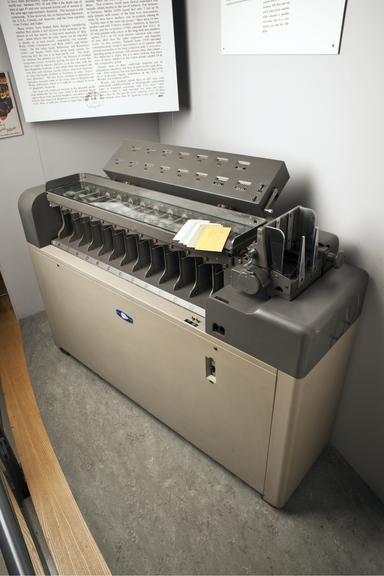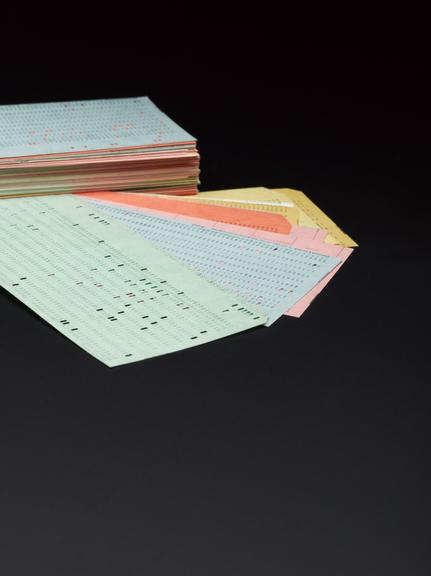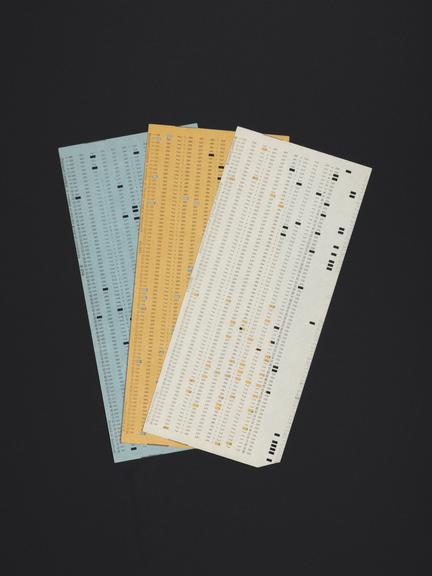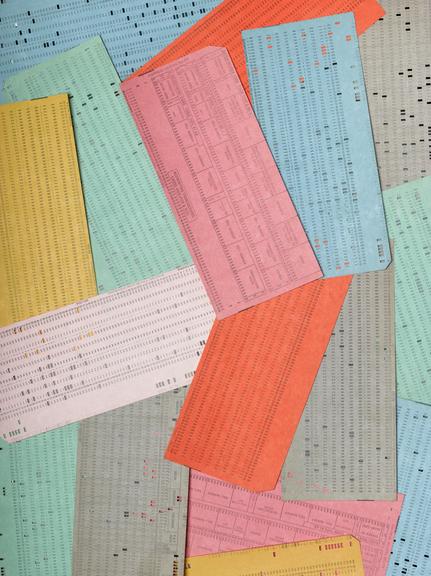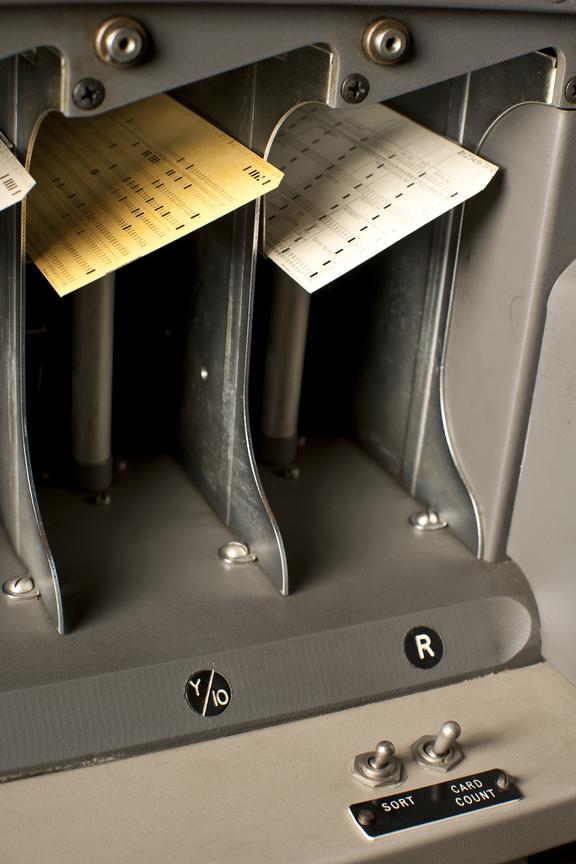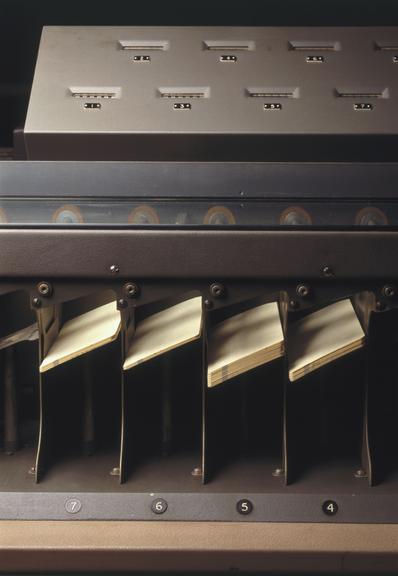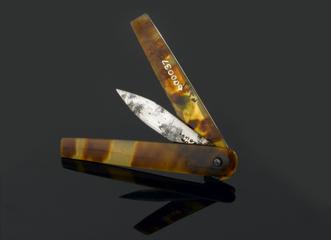
Card Sorter
Card sorter by International Computers & Tabulators, British, 1967. Used at the Institute for Social Studies in Medical Care.
More
Have you ever completed a questionnaire about your health? If so, your answers represented just one person – you. But when thousands of people complete the same survey, the resulting data might reveal just what makes them ill and what keep them healthy. Such surveys can be of great importance in epidemiology – the branch of medicine that studies the causes, distribution and control of diseases within populations. But how would you manage all that data? Especially if you didn’t have a computer. Before computers became available, you might use a machine such as this card sorter. Machines like this were used to sort data and compile medical statistics between the 1890s and the 1960s.
In the 1880s, Herman Hollerith, an American census worker developed a means by which all sorts of information could be recorded by punching holes into cards. Each hole represented a fact – ‘male’ or ‘female’, for example. Hollerith then devised a machine that could sort through the hole-punched cards and calculate statistical information. Card sorters became widely used in medicine to analyse data from mortality statistics to hospital records. Using machines to tabulate medical information proved a fast and effective way of managing it. Number crunching by hand was very time-consuming and mistakes would almost inevitably occur.
This actual machine was used by statistician Ann Cartwright at London’s Institute for Social Studies in Medical Care for over 20 years. Sorting over a thousand cards a minute, this machine helped Cartwright process large amounts of collected medical data. Large surveys like Cartwright’s had a big impact on the way medicine, social care and disease was understood - changing both practice and perceptions. The work of card sorters was to be gradually taken on by computers during the 1970s.
- Materials:
- steel (metal) , metal (unknown) , copper (alloy) , electrical components , aluminium alloy , glass , paper (fibre product) and rubber (unidentified)
- Object Number:
- 1994-99/1
- type:
- card sorter
- Image ©
- The Board of Trustees of the Science Museum




























